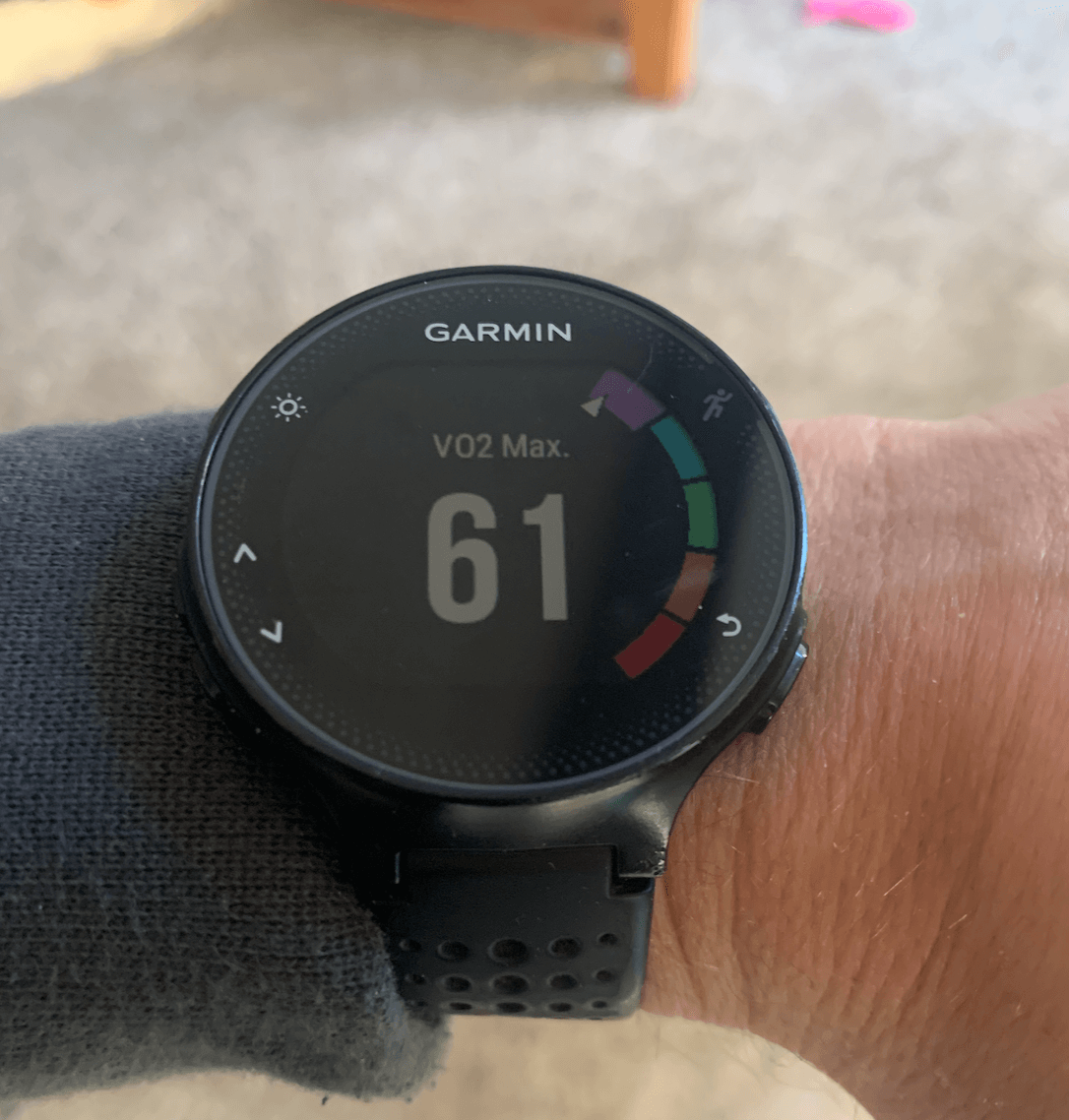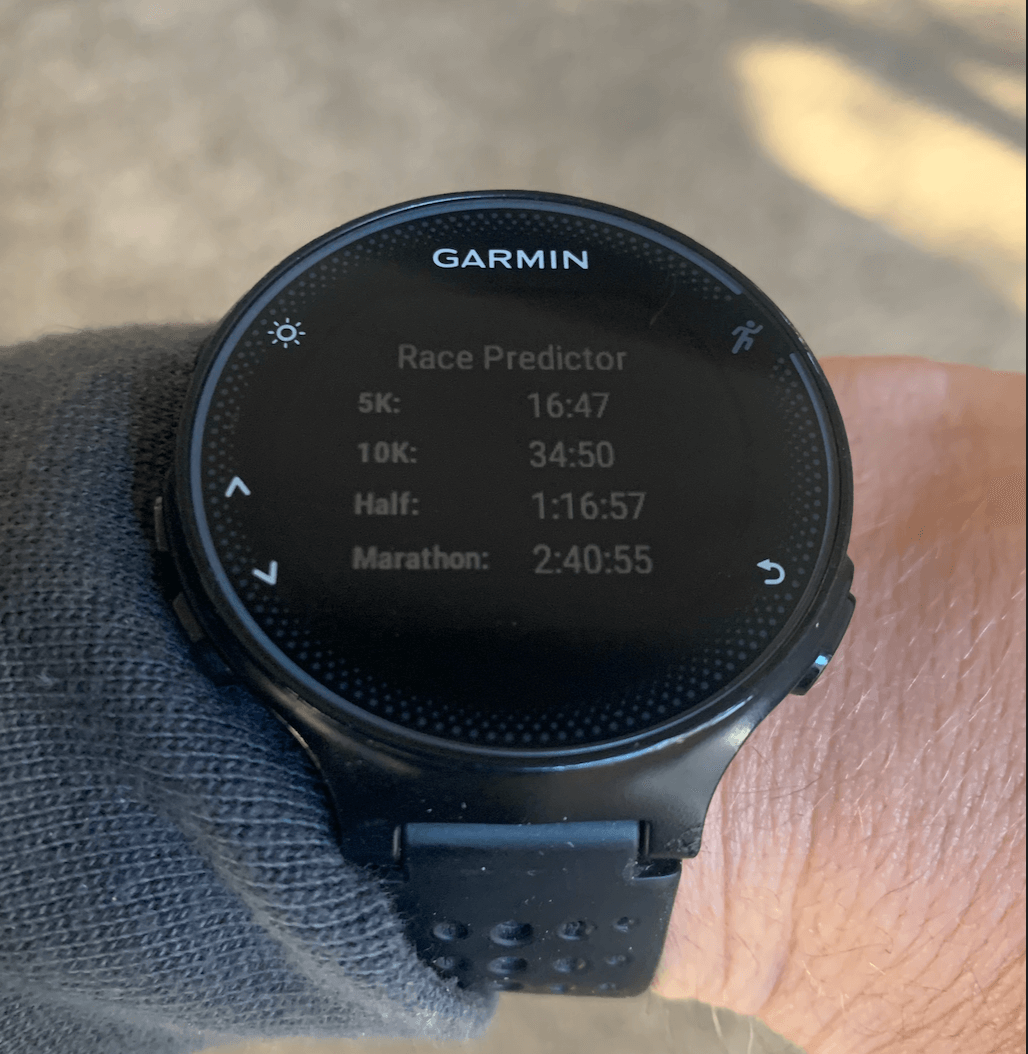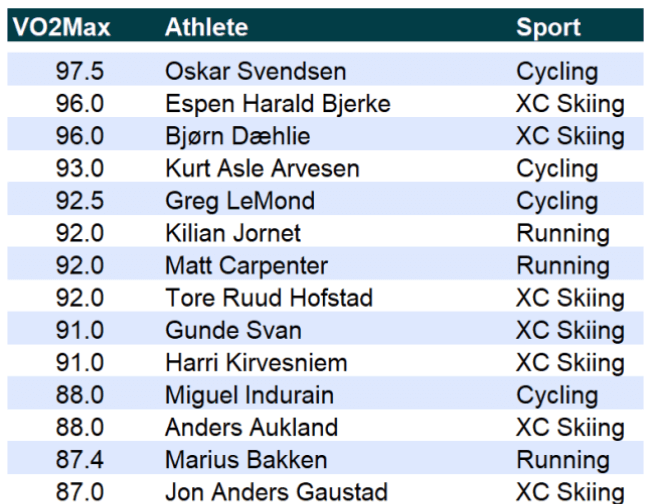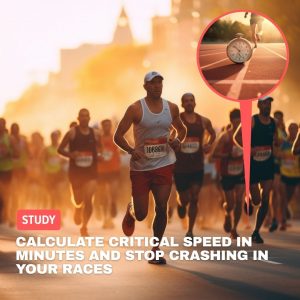In the never-ending quest to give runners more data (and more reasons to upgrade and spend more on their watches), watch companies are squeezing every bit of information they can think of into their watches.
Ground contact time, recovery rates, VO2 max, race predictions, and more.
The unfortunate part is, not only are most of these measurements useless (because they rely on imprecise formulas or data measurements), but they can actually be a huge detriment to your training.
Let me show you an example from my VOmax measurement.

At first glance this is pleasing to the eye.
I might say “LOOK! I’m in the purple, the highest tier on the watch”. Let me bask in this fitness.
You might even think I’d be happy.
But, then I see this:

Hmm..
That looks fishy. Let me explain.
Here are my actual race performances:
5k: 14:37
10k: 29:39
Half: 1:06:17
Marathon: 2:16:59
COME ON!
I haven’t lost that much fitness. NOT EVEN CLOSE.
Put simply, the VO2 max metric on your watch is wrong and it means next to nothing.
I’m sorry if you’ve been using this to direct your training, but it’s impossible to predict your VO2max and more importantly, your race times from your watch.
So, how far off is the Garmin Watch VO2 Max Measurement?
I showed you my actual race times above, now let me share with you my actual VO2 max.
I’m also going to let you in on a little secret:
A higher VO2 max doesn’t equal faster performances.
In college, I participated in a research study within our kinesiology program. As part of the study, a few athletes and I were asked to perform a lab-driven, VO2max test.
My result: 84.5ml/kg/min.
After my test, the researcher paused and told his colleagues to remember this day because they would never see a higher VO2max.
I won’t lie to you, this was fuel to my pride. I paraded that piece of paper around like Charlie Bucket.
My teammate, who also participated in the study, scored 72 ml/kg/min. Based on the considerable difference in our test scores, you would think my higher VO2max would equal a greater performance. However, my teammate beat me in every single race that year.
Why is this?
I had a superhuman VO2max. I should have left him in the dust. Yet, not only did I lose to him, but I regularly found myself mid-pack of most races.
While on paper my VO2max is extraordinary, I was very much an ordinary collegiate athlete.
How could I, with a VO2max higher than some of the greatest athletes of all time, not compete as one?
Looking at this list used to make me sad

Why does VO2max not directly correlate with race times?
While I have a greater ability to take in oxygen, he is better able to use it and sustain it. This is referred to having a greater running economy.
In this example, running economy tells us that a set pace, he needs less oxygen than I do to sustain the same speed.
In my case, 84.5 suggests that I can take in A LOT of oxygen!
Unfortunately, my body is rather inefficient in being able to use it.
My engine is HUGE, but I’m running off diesel while he is using a sleek, electric car.
So, does this make my VO2 Max and VO2max training obsolete?
YES and NO.
You shouldn’t train to just increase your VO2 max score, but you should train at VO2 max intensities (vVo2), especially if it directly supports your favorite race distance.
Often you will see milers or 5k runners doing the bulk of their work surrounding VO2.
But, every running event can benefit from training at the velocity at which you hit your VO2max.
From Mile to Marathon, vVO2 training can help:
- Increase the maximum oxygen uptake in all muscle fibers
- Increase the capillaries to all muscle fiber types
- Increase the ability to slow the build-up of waste products (not just lactic acid!) that will slow down your performance
You’ve heard of the phrase “if you don’t use it you will lose it” right?
I can give you no better example of the serial marathoner attempting to race a 5k.
No power, no turnover, NO FUN.
We can avoid this though, and we can do so while not only improving power and leg speed, but also improving our marathon times too.
Now, this pertains to all events. Not just the marathoners!
To makes things easier, I have even taken the time to help you take this one step further.
In our Ultimate Guide to VO2 max I have detailed everything you need to know about VO2 max training including specific VO2 max workouts for the 5k, 10k, Half Marathon, and Marathon.
Whether you’re looking to learn more about the sport or you’re planning on crushing some personal bests this year, knowing why and how to implement VO2 max workouts is a step toward becoming a smarter AND faster runner.
Oh and don’t forget: Ignore the the VO2 max and race time predictor on your watch! You’re better off focusing on yourself.





3 Responses
maybe the watch only works for people in the middle of the range
Loved that! So logical, and still i do get influenced by all those numbers. Thanks for sharing 🙂
One interesting aspect of the predictions is how they can become a sort of self fulfilling prophecy. People may internalize the predictions, regardless of the fact they may be off by quite a bit re: a person’s potential. Still, come race day they’ll slavishly check their watch at every split, and hew toward said prediction. I myself still wear the Garmin as I do like having the data at hand, though have reverted to listening to my body more so than checking the watch all the time during runs. I’ve had more fun and, more than once, at the end of a half marathon was surprised to see how good my times were when keeping the watch from getting in the way.